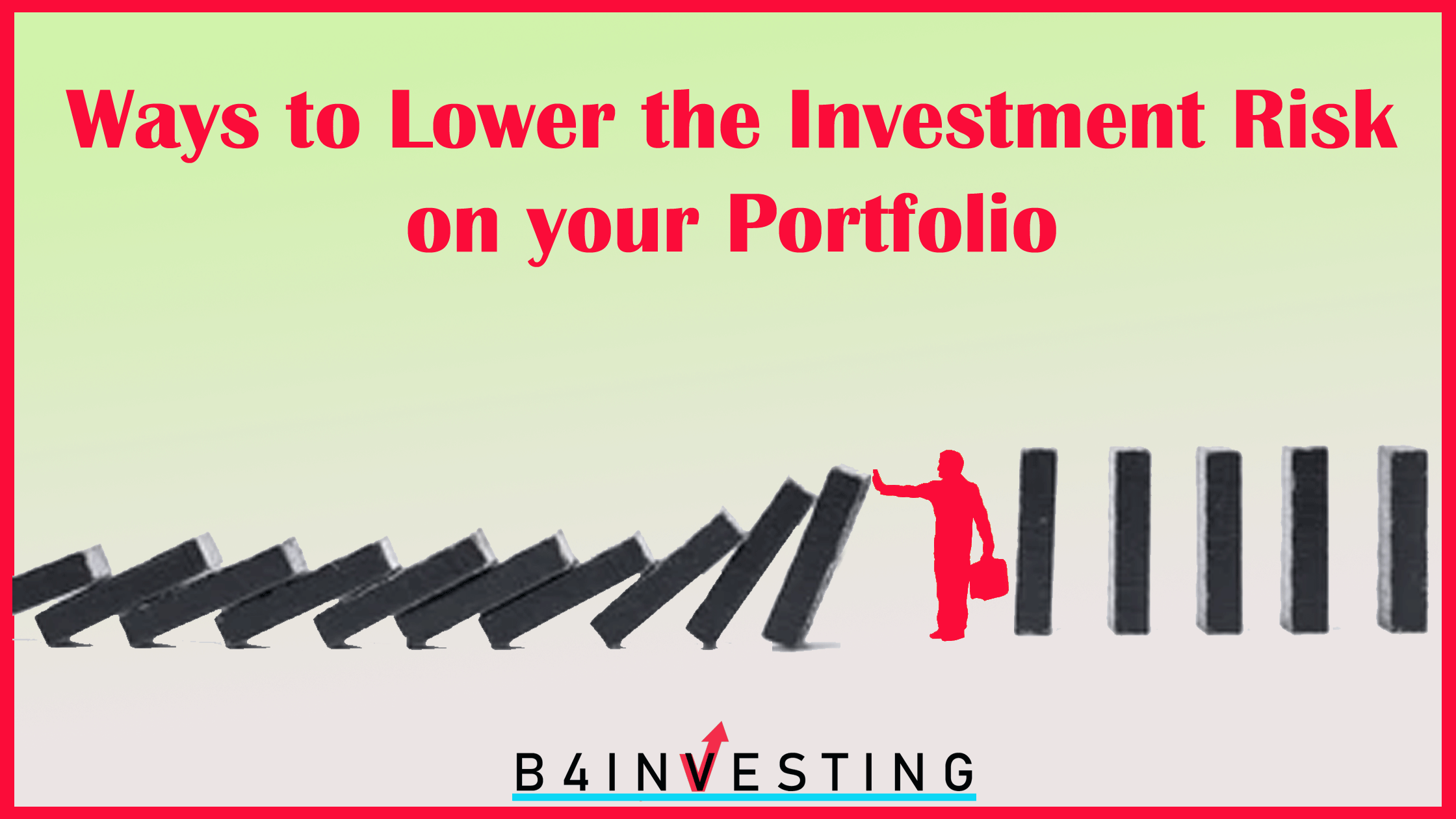
7 Ways to Lower the Investment Risk on your Portfolio
Every person has financial goals like buying a house, child’s education, child’s marriage, retirement planning, etc. So, a person needs to invest money to achieve financial goals. But investment carries risk along with it. There is a risk of losing money. Investor can’t ignore the risk. But it can be reduced with proper knowledge. Investor needs to manage risk. We will discuss few ways to manage risk.
Not taking risk does not mean completely avoiding it. Equity market pays higher return than debt market but it carries more risk too. So, higher the risk, higher the chances to earn more return. When investor is planning to invest in riskier investment tools, he/she needs to apply investment strategies which reduces risk and losses.
Ways to reduce investment risk
1. Understand your Risk Tolerance
Risk tolerance means if investor has ability to lose partial or whole capital amount which has been invested. Investor’s age and current financial situation play an important role. If investor is young, unmarried with fewer financial dependencies then he/she can bear the loss of losing money as he/she can earn the money back. But investors in middle age having children and parents dependent on them cant bear the risk of losing money so they have less risk tolerance.
So, it can be said, “younger investors are more risk tolerant than older investors.”
So, if investors start investment from early age, they should make their investments mainly into equity market. So they have chance of wealth creation as higher risk may give higher return. But the same is not true for senior citizens. Senior citizens who are near retirement phase need to focus on wealth preservation as they should have money for living when their earning stop.
If investors know how much risk they can take then they can plan investment accordingly for managing investment risk.
2. Keep Sufficient Liquidity in Portfolio
Emergency can occur anytime. In such time, investors need money so they redeem money from investment even though the market is down. So, investors should have liquid assets for such emergency situation. So, adding liquid assets in existing investment can give higher return in long term as investors don’t have to liquidate other investments in emergency.
Investors should maintain sufficient liquidity like expense of 8 to 9 months aside as emergency fund. Investors can invest in funds like Liquid funds, Overnight funds to have easy access of emergency fund.
3. The Asset Allocation Strategy
Asset allocation means investing in more than one assets like gold, property, equity, debt, etc. It reduces investment risk as if price of one asset goes down, the other performing asset balances the risk.
Investor can plan to invest in assets which are inversely correlated to each other so when one market underperform, the other market outperform. For example, equity and gold. Equity and Gold are inversely correlated to each other, so when equity outperforms, gold underperforms. Investors can also invest in non correlating assets like bonds, commodities, currencies, and real estate.
4. Diversification
After selecting the combination of assets as per risk tolerance, financial goals, investor has to decide further to diversify investment in individual assets. When it comes to investing in equities, it is recommended building the portfolio of Large-cap, Midcap and Small-cap funds. When market crashes, small-cap companies fall faster than large-cap. Diversifying investment will reduce the risk.
5. Rupee-cost averaging method
Investors often get confused when to enter the market and when to exit. The experienced professionals also find it difficult to determine accurate time to enter (buy) or exit (sell) the market for their investments. In the rupee cost averaging approach, investor invests a fixed amount of money at regular intervals irrespective of whether the market is going high or low. This approach brings down average cost per unit over the long-term. So it helps in reducing loss as buying cost gets averaged.
6. Analysis
Investors are responsible for their own finances so investors need to do analysis of market. If investors are planning to invest for long term then they should analyse how the management is performing, company’s balance sheet, PE, Debt-Equity ratio, etc. By doing so, investors will understand how company is going to perform in future. Investor should not listen to anyone blindly as it can increase the investment risk.
7. Monitor Regularly
Investors have to monitor their portfolio regularly as asset allocation which was right at the time of investment cannot be right after one year due to the reason of changes in market. Long-term investors just cant invest and forget about their portfolio. Investors need to regularly keep watch on portfolio’s performance and do periodic reviews.
Some asset classes like equities are prone to short-term volatility. So, a long-term investors should monitor their portfolios for short-term volatility and only change investments if it is showing poor performance over an extended period.
Takeaway:
Equities are volatile, and volatile means risk. But not investing is also a kind of risk as you don’t give a chance to you money to grow. If you take decisions wisely, select and diversify assets properly then there are chances of growing your money and achieve financial goals with time. Warren Buffet has one rule while investing; Never lose money. Its your money and proper planning can grow it. Take advise from expert and keep monitoring how portfolio is growing.

